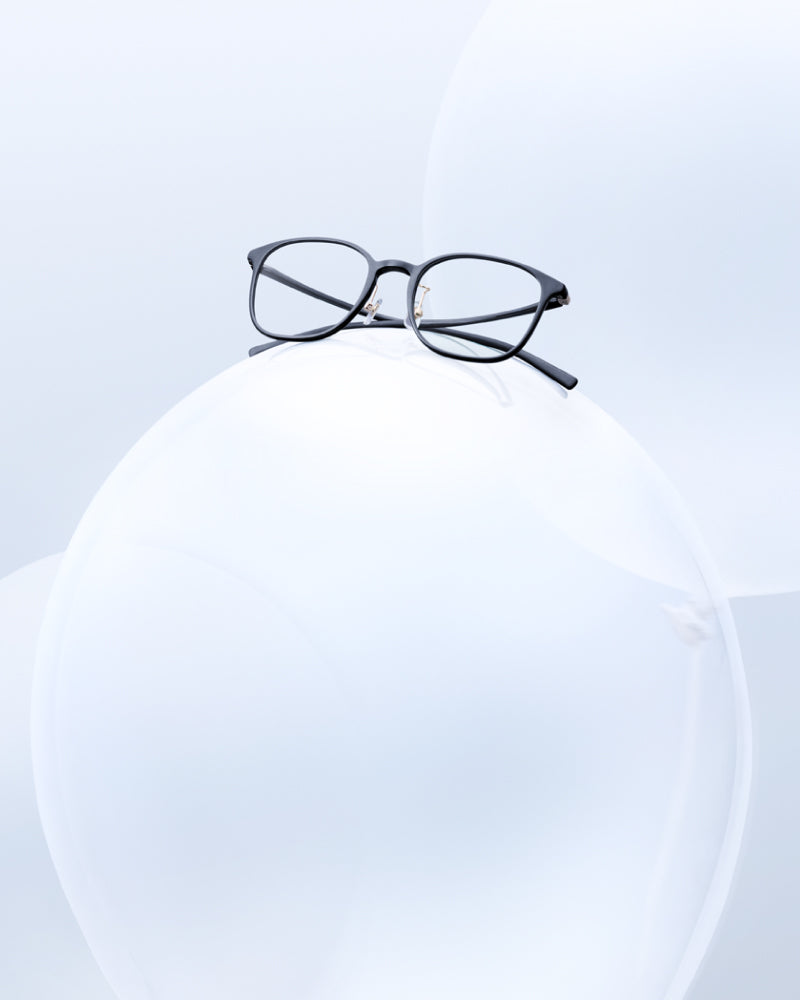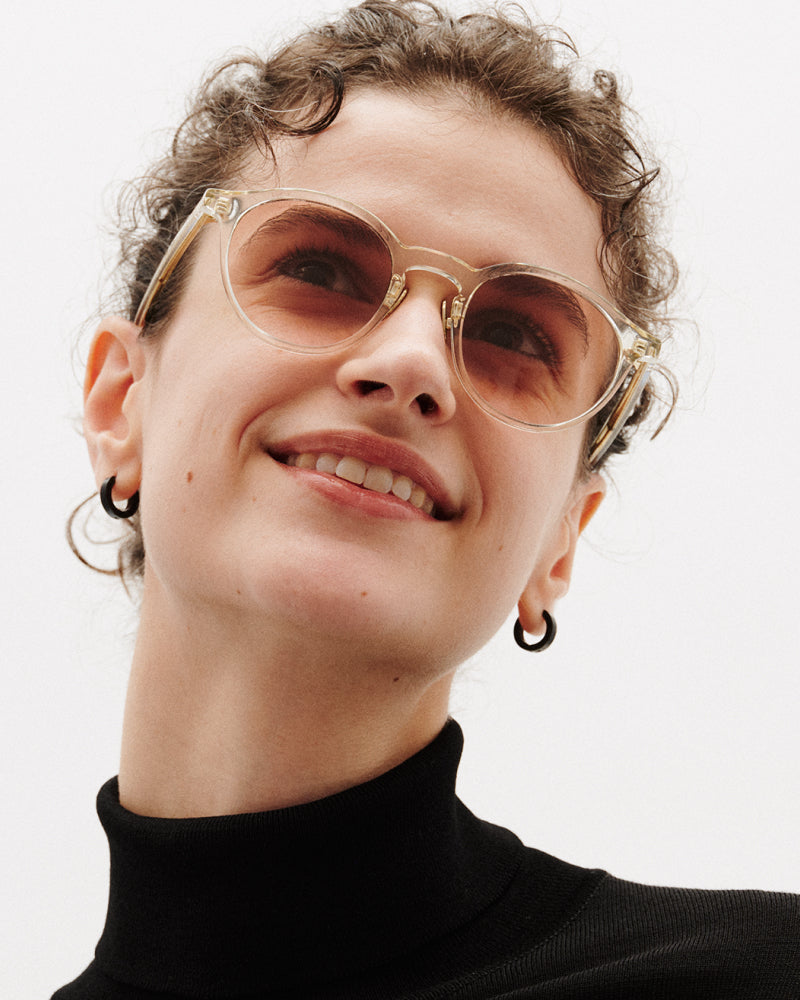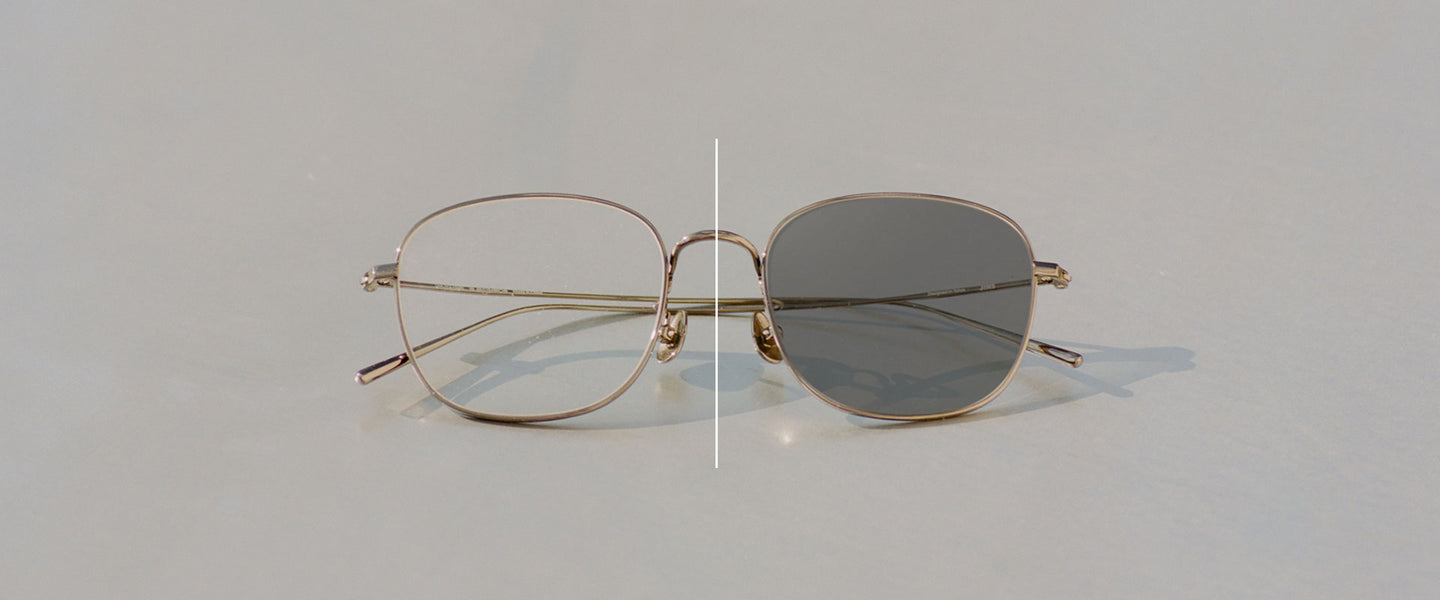Are you constantly losing your sunglasses? Does reading the menu at an outdoor brunch mean switching between your sunglasses and regular eyeglasses?
Transition glasses might be the solution to your problem. Also known as photochromic lenses, these are glasses that automatically darken when exposed to UV light, then fade back to clear lenses when in the dark or softer light. Essentially, they are glasses that turn into sunglasses, eliminating the need for you to carry multiple pairs and switch back and forth.
How Do Transition Lenses Work?
Photochromic lenses look identical to any other eyeglass lenses. What makes them different is the inclusion of a special photochromic layer that is applied before other protective layers.
The photochromic layer is a mixture of silver halide and chloride molecules. When exposed to UV light, the molecules change structure and appear to darken. The lens surface has millions of these molecules, which all darken simultaneously, allowing you to see better in bright conditions. The effect is temporary, so as soon as you go inside and are less exposed to UV light, the molecules return to their normal state.
This chemical reaction takes just seconds. On average, most transition glasses turn into sunglasses within five seconds and return to regular eyeglasses in less than a minute.


Gray Photochromic


Brown Photochromic
Are Transition Lenses Right for Me?
Opting for transition lenses makes wearing glasses convenient and cost-effective. There's no need to carry multiple pairs of glasses and switch between them—or worry about leaving them behind somewhere. Find a style you love? You can wear them indoors and out, keeping your look on point all day, every day. You can even choose the lens tint color; JINS offers both gray and brown photochromic lenses.
And since you are purchasing both your eyeglasses and sunglasses at once, you can save money compared to buying them separately. This lets you see clearly and protect your eyes from UV rays without breaking the bank.
So, are transition lenses right for you? If you're considering a pair of transition glasses, you should be aware of the potential drawbacks.
Some people find that it takes longer than they'd like for their lenses to transition from dark to light when they come indoors. If you're not a fan of the sunglasses inside look, you may not want to wait for the lenses to fade.
The materials used for transition lenses have advanced considerably in recent years, and most lenses switch back fairly quickly. Cold weather can influence the transition speed, though—the colder the molecules, the longer they take to return to their lighter form. But again, technological advances are making this less of an issue.
It's also common for transition lenses to darken less—or not darken at all—while driving. Vehicle glass is already treated to block UV rays, so those rays won't reach your eyeglasses when you're in the car. If you do a lot of driving, a pair of prescription sunglasses may be a better choice.
At the same time, photochromic lenses will darken any time you're exposed to UV light. This means that you'll have darker lenses outdoors, even on overcast days. This can make it harder to see clearly and will look like you're wearing sunglasses on a cloudy day.
How to Choose the Best Lenses
When you want style and convenience, transition glasses can give you the best of both worlds. JINS lets you customize your prescription lenses with a photochromic coating. Still want a pair of dedicated prescription sunglasses? No problem! Pick your favorite frames and choose polarized or dark sunglass lenses during checkout. We make it easy and affordable to get eyewear that reflects your unique style.


















